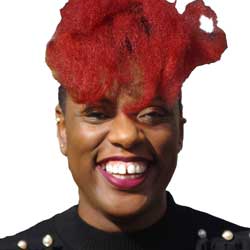A different type of leadership
If HR teams need to adapt to take on more of a leadership role in the new organisational landscape, what does it mean for the leaders themselves?
Shereen Daniels is Managing Director of HR Rewired and former Head of People at Caffe Nero. She started her own consultancy advising companies on culture change, with a particular focus on anti-racism. Daniels says that the pandemic has transformed what leaders look like, along with the ways they interact with their people.
“CEOs have changed,” she says. “They are shedding the layers of who they thought they had to be and recognising that we’ve been levelled to a certain extent. We've all had to recalibrate what it means to be who we are.
“For some people who are used to the formality of being a leader, I think that’s probably been a more challenging journey to take. Because with those individuals, there’s always the concern that the more relaxed and informal they are, the less they’ll be taken seriously, and the less they’ll be respected.”
Leadership leveller
As Anita Jones, chief executive at Freebridge Community Housing, puts it, the pandemic has forced leadership teams to adopt a “more authentic and informal” style. “People want leaders in their organisations that they feel have some empathy with what they’re juggling,” she says.
“CEOs have changed. They are shedding the layers of who they thought they had to be and recognising that we’ve been leveled to a certain extent.”
What all of this means is that the manager-employee relationship has gone through a subtle but significant change. Bosses no longer monitor their workers, and surveillance has given way to – in an ideal world – mutual trust and respect. Moreover, management’s focus needs to shift from inputs to outputs, and this change in mindset will take time to achieve, for both managers and staff.
Temporall’s Thomas Davies describes what has happened to the interface between leaders and their employees as “a dilution of command and control”. The means through which leaders once demonstrated their position, surveyed their teams, and offered organisations a sense of structure – often through the physical environment of an office – have disappeared
Work post the office
He explains: “Leadership teams have never had it so difficult because they can’t see and sense and feel what’s going on in their company. So you’ve got a situation where command and control doesn’t really work in highly distributed workforce environments, and secondly, as leaders, we’re all missing those social cues that allow us to respond naturally to what’s actually going on.”
This new relationship – one in which the physical closeness between colleagues has been removed – calls for more responsibility from employees and a more sophisticated approach to management from their bosses.
But are we really about see the end of the office environment completely? If so, what will replace it and how will organisations have to adapt?
CONTRIBUTORS:

Shereen Daniels Managing Director, HR Rewired

Anita Jones
Chief Executive, Freebridge Community Housing
